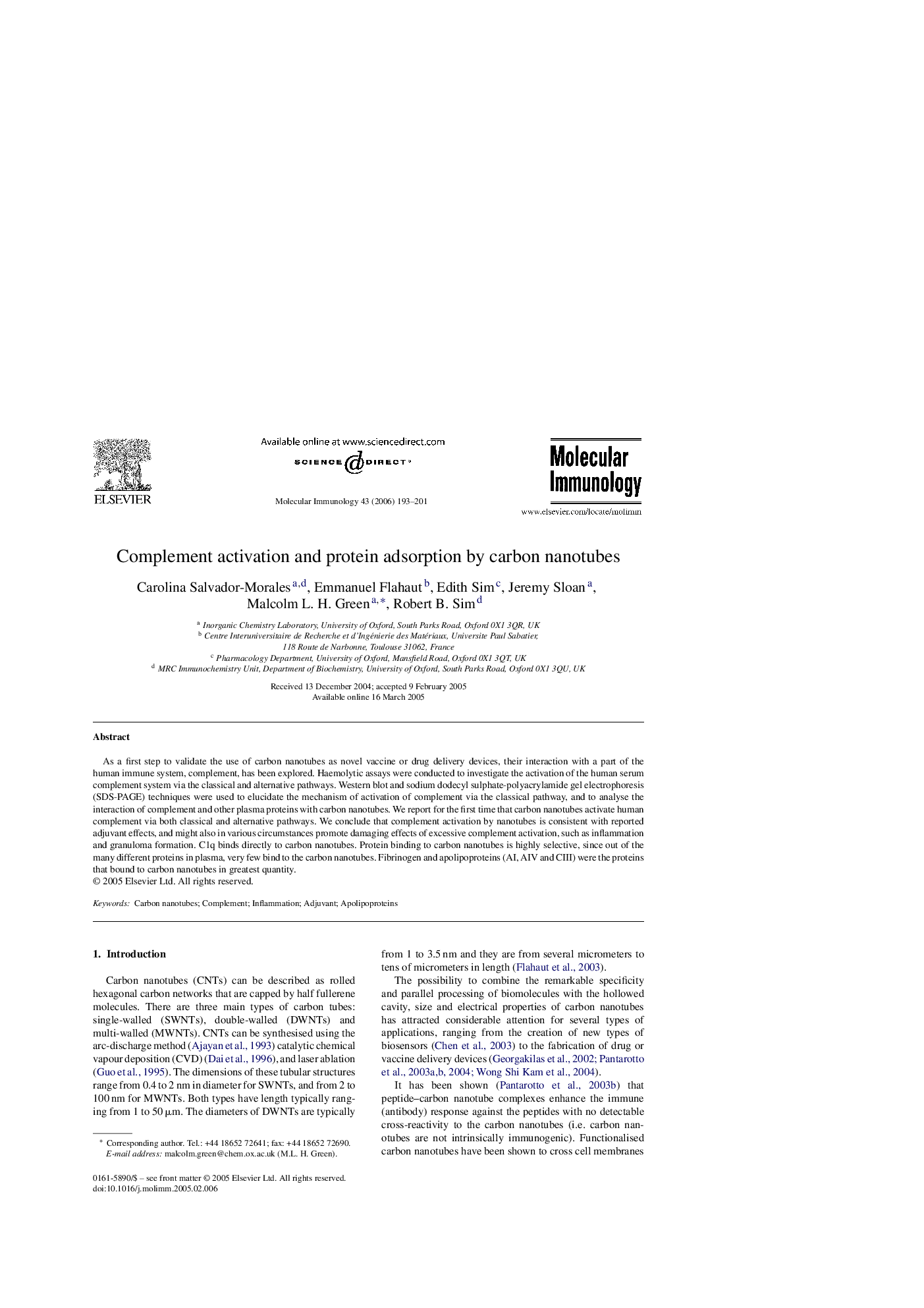| Article ID | Journal | Published Year | Pages | File Type |
|---|---|---|---|---|
| 2833168 | Molecular Immunology | 2006 | 9 Pages |
As a first step to validate the use of carbon nanotubes as novel vaccine or drug delivery devices, their interaction with a part of the human immune system, complement, has been explored. Haemolytic assays were conducted to investigate the activation of the human serum complement system via the classical and alternative pathways. Western blot and sodium dodecyl sulphate-polyacrylamide gel electrophoresis (SDS-PAGE) techniques were used to elucidate the mechanism of activation of complement via the classical pathway, and to analyse the interaction of complement and other plasma proteins with carbon nanotubes. We report for the first time that carbon nanotubes activate human complement via both classical and alternative pathways. We conclude that complement activation by nanotubes is consistent with reported adjuvant effects, and might also in various circumstances promote damaging effects of excessive complement activation, such as inflammation and granuloma formation. C1q binds directly to carbon nanotubes. Protein binding to carbon nanotubes is highly selective, since out of the many different proteins in plasma, very few bind to the carbon nanotubes. Fibrinogen and apolipoproteins (AI, AIV and CIII) were the proteins that bound to carbon nanotubes in greatest quantity.
